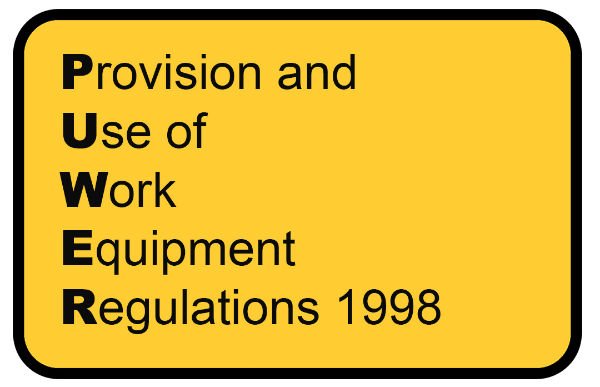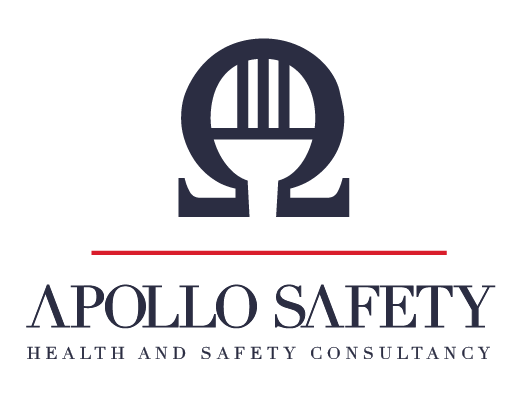Title Page
-
Site conducted
-
Assessment Type
-
Machine / Equipment Being Assessed
-
Picture of Machine / Equipment
-
Assessed By
-
People Consulted
-
Conducted on
PUWER Assessment Report
PART 1 – GENERAL REQUIREMENTS APPLICABLE TO ALL EQUIPMENT
Reg. 4 – Suitability of Work Equipment
-
Is the equipment suitable by design, construction or adaptation for the work it is provided to do?
-
Is the equipment suitable for the conditions in which it is to be used (e.g. electric drill to be used outside in damp conditions)?
-
Is the equipment suitable for the purpose or conditions of use (e.g. use of knives for cutting equipment where scissors would suffice)?
Reg. 5 – Maintenance
-
Is the equipment maintained? If so, state frequency
-
Add evidence (pdf)
-
Is the equipment subject to statutory inspection? If so, state which regs. apply e.g. COSHH, LOLER etc
-
Is the maintenance work routine based on the manufacturer’s recommendations?
-
Is the maintenance work planned and preventative (required where parts of the equipment could fail in a dangerous way)?
-
Have all maintenance staff received adequate information, instruction and training?
-
Evidence of training records (Pdf)
-
Is a record of maintenance kept?
-
If a maintenance log is kept, is it up to date?
Reg. 6 – Inspection
-
Is equipment inspected after installation and before being put to use for the first time?
-
Is equipment inspected after it is assembled at a new site or location?
-
Is work equipment inspected at suitable intervals when it is exposed to conditions causing deterioration, which is liable to result in dangerous situations (e.g. high vibrations)?
-
Is the equipment inspected for safety, each time an exceptional circumstances arises e.g. a major fault occurs?
-
If equipment leaves the undertaking, or if obtained from another person, it is accompanied by physical evidence that the last inspection has been carried out?
-
Add evidence (pdf)
Reg. 7 – Specific Risks and Restrictions on Use
-
Is the use of this equipment restricted to specific persons (e.g. abrasive wheels, circular saws, etc.)?
-
Is the repair, maintenance, modifications and servicing restricted to specific persons?
-
Have those persons who use, repair, maintain, modify or service the equipment been adequately trained?
Reg. 8/9 – Information, Instruction and Training
-
Have all users of work equipment received adequate information, instruction and training, including: -<br> Methods<br> Risks<br> Precautions<br>
Operator
-
Name
-
Standard Operating Procedure
-
Risk Assessment
-
PPE Assessment
-
Training
-
Has special emphasis been given to young persons under 18 years of age?
-
Have all supervisors/ managers of work equipment received adequate information, instruction and training, including: -<br> Methods<br> Risks<br> Precautions<br>
Supervisor
-
Standard Operating Procedure
-
Risk Assessment
-
Training
Reg. 10 – Conformity with EC Requirements (NEW EQUIPMENT ONLY)
-
Dose the equipment comply with relevant community directives (e.g. does it display a CE mark)?
-
If so and where an essential requirement has applied to the design and construction of an item, have the requirements of regulations 11-19 and 22-29 been applied?
Reg. 11 – Dangerous Parts of Machinery
Reference should be made to BS5304, BSEN292-1 in making this assessment
-
Have measures been taken to prevent access to dangerous parts of the machine or rotating stock bar, or to stop movement or any dangerous part or rotating stock bar before any person enters a danger zone?
-
In particular: -<br>So far as is practicable have fixed guards been provided? If not then…<br>
-
So far as is practicable have other guards or protection devices been provided? If not then…
-
So far as is practicable have jigs, holders, push sticks or similar protection devices been provided?
-
Has adequate information, instruction, training and supervision been given?
-
Do the guards or safety protection devices comply with the following requirements?
-
Suitable for the purpose
-
Of robust construction
-
Maintained in an efficient state
-
Do not give rise to any increased risk (e.g. Crushing or cutting)
-
Are not easily bypassed or disabled
-
Situated at sufficient distance from the danger zone (Safety distances comply with BS EN ISO 13857)
-
Do not restrict the view of the operating cycle
-
Allow operations necessary to fit or replace parts and for maintenance work, restricting access so that it is allowed only to the area where the work is to be carried out and, if possible, without having to dismantle the guard or protection device
Reg. 12 – Protection Against Specified Hazards
-
So far as is reasonably practicable, does the design of the equipment prevent risks from the following?
-
Any article or substance falling or ejected
-
Rupture or disintegration of parts
-
Catching fire or overheating
-
Unintended discharge of article or gas, dust, liquid, vapour or other substance
-
Unintended explosion of equipment or article or substance used or stored in the equipment
Reg. 13 – High or Very Low Temperature
-
Does the design of the equipment prevent injury to any person by burn, scald or sear by parts of the equipment, articles or substance produced, used or stored in the equipment?
Regs. 14 - 18 – Control Mechanisms/ Systems
This section is qualified by the term ‘where appropriate’ which relates to the features, functioning and the risk associated with use. Start, stop and emergency control systems are not generally appropriate for work equipment with no moving parts, or where the risk of injury is negligible, e.g. battery powered clocks (ref should be made to the guidance note). It may well be that some of the following questions are not applicable.
Reg. 14 – Starting Controls
-
Do the controls for starting the equipment and controlling changes in speed, pressure or other operating conditions require a deliberate action to operate? Note - This does not apply to restarting or changing operating conditions as a result of the normal operating cycle
-
Are the controls protected against inadvertent operation (e.g. starter shrouded)?
Reg. 15 – Stop Controls
-
Is the equipment provided with one or more readily accessible control device which brings the equipment to a safe condition in a safe manner?
-
Are all sources of energy switched off after stopping the equipment (compressed air/ hydraulic pressure)?
-
Does the stop command have priority over the start command?
Reg. 16 – Emergency Stop Controls
-
Is the equipment provided with one or more emergency stop controls? *Note - An emergency stop control is not required for hand held or hand guided machines or for machines which stop quickly use the stop control*
-
Is power disconnected to actuators after the equipment comes to a stop?
Reg. 17 – Controls
-
Are all controls clearly visible?
-
Are they identifiable?
-
Are they appropriately marked?
-
Are control mechanisms in a safe position and operators free from danger?
-
Are the controls positioned where it is possible to see if anyone is in the danger zone?
-
Are systems in place to ensure health and safety?
-
Are there audible, visible or warning devices which are activated before the equipment starts?
Reg. 18 – Control Systems
-
Is the control system safe and chosen making due allowance for the failures, faults and constraints to be expected in the planned circumstances of use?
-
Does a failure of any part of the control system or its power supply lead to a ‘fail-safe’ condition, which will not impede the operation of the ‘stop’ or ‘emergency stop’ controls?
-
State the performance level (PL) as defined by BS EN ISO 13849-1, if known
Reg. 19 – Isolation
-
Are there suitable means to isolate the equipment from all sources of energy (e.g. multiple lockable hasps, removal of plug, close and lock off valves, drain/ vent outlets, etc.)?
-
Are the means of isolation clearly identifiable?
-
Are they accessible?
-
Do these means of isolation have the facility to release stored energy and to be locked in the off position? (e.g. re-connection initiating movement)
Reg. 20 – Stability
-
Is the equipment stabilised by clamping or otherwise where necessary to prevent risk of injury (e.g. machines bolted to floor, scaffolds tied to building, outriggers on mobile cranes, etc.)
Reg. 21 – Lighting
-
Has suitable and sufficient lighting been provided, which takes into account the operations being carried out? (e.g. Inspection areas are to be brighter)
Reg. 22 – Maintenance Operations
-
Can maintenance operations which involve a risk be carried out without exposing the person carrying them out to a risk?
-
Can maintenance operations be carried out without exposing the person carrying them out to a risk?
-
Can maintenance operations which involve a risk be carried out safely if appropriate measures are taken to protect the person carrying out the work?
Reg. 23 – Markings
-
Is the equipment appropriately marked for health and safety purposes e.g. emergency stop controls, safe working load, gas cylinders labelled up
-
Do all markings comply with BS 5378 or Safety Signs and Signals Regulations 1998?
Reg. 24 – Warnings
-
Are all warnings and warning devices unambiguous, easily understood, easily perceived (e.g. signs complying with the Safety Signs and Signals Regulations 1998, audible visible warnings on fork lift trucks, etc.)?
-
Additional Information (pdf)
Sign off
-
Name / Signature
-
Supervisor
- Jordan Reid
- Mick Smith
- Dave Tuck
- Tim Brown
-
Notify Supervisor
-
Notify Supervisor
-
Notify Supervisor
-
Notify Supervisor









